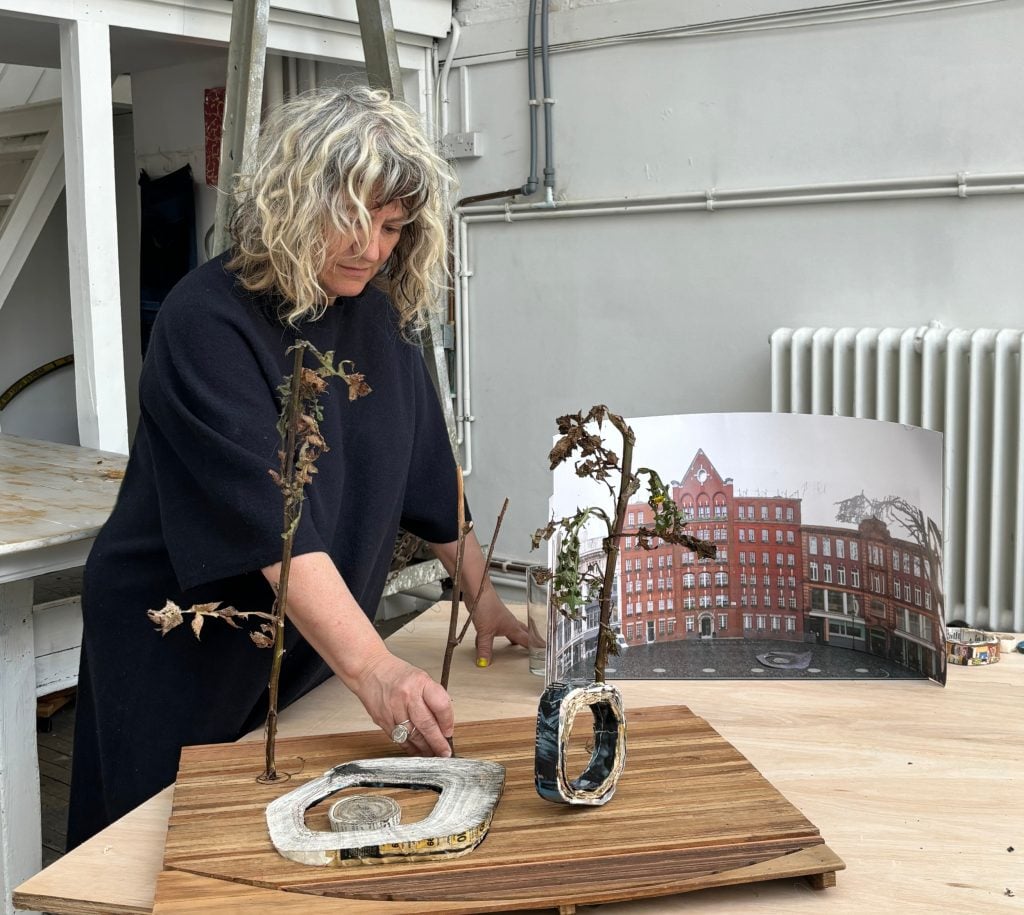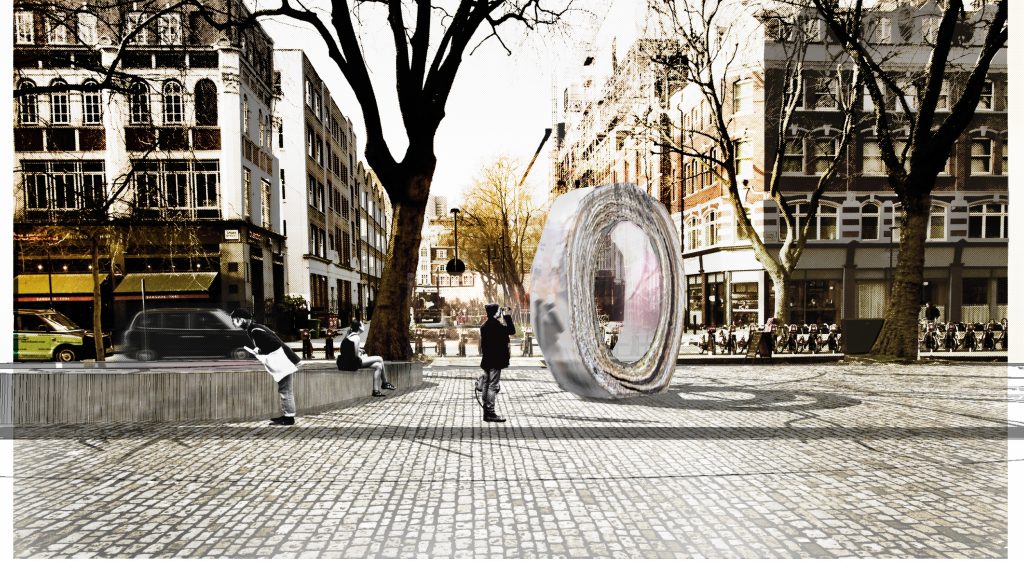Art World
Winning Design for London’s First AIDS Memorial Is Revealed
British artist Anya Gallaccio has imagined a place for community gathering to commemorate those affected by HIV and AIDS.

British artist Anya Gallaccio has imagined a place for community gathering to commemorate those affected by HIV and AIDS.

Jo Lawson-Tancred

Artist Anya Gallaccio has been selected to create London’s first memorial to those affected by HIV/AIDS. Her winning proposal takes the form of cross-section of a tree trunk with some of the inner rings removed and displayed upright nearby. The space left behind creates a circular, bench-like structure that is imagined as a space for community gathering.
The monument will be installed on South Crescent, Store Street in Fitzrovia, thanks to a years long campaign by AIDS Memory U.K., a charity raising awareness of the disease’s continuing impact. It will be publicly funded with £130,000 ($166,000) allocated by mayor Sadiq Khan from the Commission for Diversity in the Public Realm.
The monument is intended to provide a space for the remembrance of all those who have been affected by HIV/AIDS, whether in the past or present. Some communities are disproportionately affected, including gay or bisexual men, Black African communities, and some drug users.
“I have endeavored to propose a work, that is open enough to make space for all those caring for, living with, and who have died from the virus,” Gallaccio said when asked why she favored a more abstract approach to representing this loss. “Trees are a universal symbol of life.”

Anya Gallaccio’s design for The AIDS Memorial London. Image: Anya Gallaccio & Rinehart Herbst.
The artist also hopes that the site will be activated by community gatherings. “Public monuments are increasingly loaded,” she said. “Our cities are marked by other’s histories. My proposal counters this by offering an open space to challenge the preconceptions of how our city spaces are memorialized.”
She emphasized the importance of meeting places, after “entire social cultural oral histories were lost as friend groups, chosen families, generational communities were wiped out” by AIDS.
The absence of some rings within the trunk are a poetic nod to the gravity of this loss. “The initial epidemic created a massive cultural rift, more pronounced than a simple generation gap,” said Gallaccio. “Those who remain are left to deal with that gap; the dead continue to occupy spaces in the lives of the living.”
“Those of us affected by HIV and AIDS directly will find some closure when the monument exists as our grief and the ongoing stigma we face is being recognized as real and as enormous as it is and has been,” said Ash Kotak, director of AIDS Memory U.K. “Each year the London AIDS Vigil on World AIDS Day (1st December) already takes place at the site where Londoners, from all communities, gather to remember our losses, to celebrate life and to activate to end HIV and AIDS worldwide for all.”
He also highlighted the memorial’s theme of communality and co-operation: “HIV united people of differing, sometimes opposing, belief structures, and values. Together, we had to fight unprecedented societal stigma. In a life-threatening emergency such as AIDS, we overcame our outward differences by seeing the common humanity we all share in order to fight for our self dignity and our survival.”
Gallaccio was chosen out of five shortlisted contenders: Ryan Gander, Diana Puntar, Harold Offeh, and Shahpour Pouyan. Based between London and San Diego, the British artist is currently preparing for “preserve,” a major solo exhibition at the Turner Contemporary museum in Margate, a coastal town in the south of England. It opens to the public on September 28 and runs through January 12, 2025.